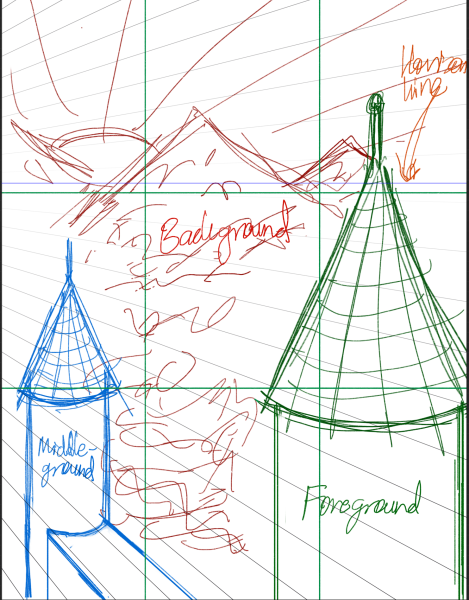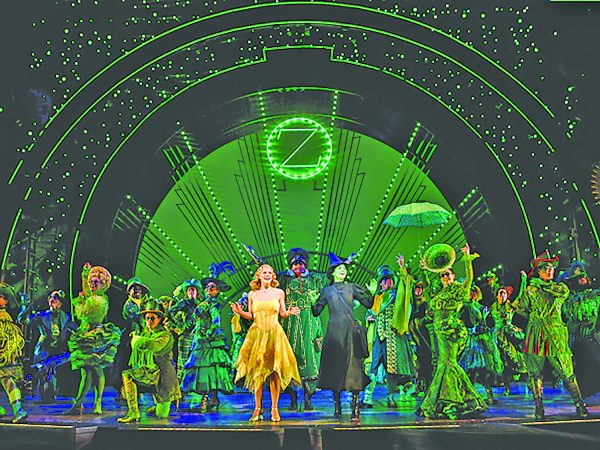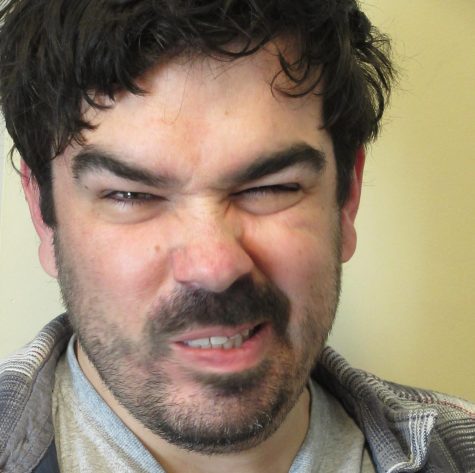Springsteen ‘75 re-materializes, says: “I’ve seen some shit”
Upon re-materializing in 2014, Springsteen waded out of the very Jersey swamp in which he was conceived
Even those who are simply aware of Bruce Springsteen’s continued existence probably remember his album “The Rising.” It came out just after 9/11, when we were searching for landmarks of American identity, it reunited Springsteen with his legendary E Street Band, with which he hadn’t laid down a record since “Born in the U.S.A.” in 1984, and it sounded more like “classic” Springsteen than anything since then—so it was declared Springsteen’s comeback.
Yet, if we listen to “The Rising” with our ears rather than through the filter of our longing, we hear three good songs, six sonic brontosauruses, and six planes that, at best, turn on their engines, and at worst sit still on the runway.
In a horrific passage of a recent NPR interview, Springsteen confirmed my suspicions that his producer from “The Rising” in 2002 ‘til 2009, Brendan O’Brien, aspires to be a magician, and is deaf. O’Brien took only a week to mix each of Springsteen’s four records from ’02 to ’09, Springsteen reveals in the interview, and was only interested in the lyrics when they were egregiously awful, at which point O’Brien and Springsteen would come up with a better rhyme. O’Brien rhymes with “oh dyin’,” which could’ve been Springsteen’s response as to how his music was doing during those years.
O’Brien’s magic trick was bringing Bruce Springsteen back, which he only did at the most superficial level, by restoring the sound of Springsteen’s records from the $5 Big Lots bargain bin production they’d received in the Nineties. But at least those Nineties records had sonic highs and lows. O’Brien’s production is one-note: everything is up front and two-dimensional. “Working on a Dream” (2009), Springsteen’s eccentric, colorful stab at post-election victory joviality, got the brunt of it, and was defused by O’Brien’s monochrome sound.
It seems that, in the case of a moralistic, idealistic, romantic artist like Bruce Springsteen, our idealism easily trumps our ears. Take Brian Hatt’s review of “Working on a Dream” for “Rolling Stone,” a magazine which worships the Boss from some nightmare dimension where empirical evidence is treated as fantasy. Hatt’s review opens: “To understand the romantic sweep and swaggering musical ambition that define Bruce Springsteen’s first album of the Obama era, you have to go all the way back to an artifact from the Ford administration: 1975’s ‘Born to Run.’”
Here Hatt has described what the album should have been, the ideal, and it’s an attractive one, even suggesting that “Working on a Dream” shows some form of development from Springsteen’s holy masterpiece “Born to Run.” But if Hatt had only paid attention to that which has annoyed “Rolling Stone” staffers for four decades, sound, he would’ve noticed that “Working on a Dream,” with its pleasant stylistic eccentricity, fill-in-the-blank lyrics, and suffocatingly flat production, is actually just Bruce Springsteen’s sweetest fart.
And yet the “Rolling Stone” review of Springsteen’s next album, “Wrecking Ball” (2012), was absolutely accurate in its assessment that “Wrecking Ball” is “the most despairing, confrontational, and musically turbulent album” Springstreen has made. The fact that the reviewer, David Fricke, never once avoids specifics in his flowing, 844-word praise of the album, is a triumph of the empirical over the delusional, and a testament to the strength of the record. Though Fricke didn’t say so, I think it’s clearly Springsteen’s best album since “Tunnel of Love” (1987), the last in Springsteen’s extraordinary 8-for-8 streak of consistently good albums.
Ron Aniello produced “Wrecking Ball,” the guy who produced—get this—Lifehouse. Aniello understands the sexual ebb of rock ‘n’ roll, the erotically harmonic rise and fall of guitar into drums, the crest and crash of verse into chorus and back into verse. He is a true producer, and so he seeks three dimensions from Bruce Springsteen, rather than his own personal rock-god Lazarus. By following his ears first and imagination second, Aniello has actually brought back Springsteen: not the legend, but the man it overtook.
“High Hopes” is Springsteen’s second album with Aniello; Brendan O’Brien is credited as co-producer, but that’s just because Aniello and Springsteen have rescued these songs from the dungeons of the O’Brien years, and because Aniello and Springsteen pay heed to the adage about keeping your enemies closer. 12 of the album’s 14 songs were written or recorded in some juvenile form between 1998 and 2008, alarming those paranoid-delusional Springsteen fans who toss their sodas after one sip and put their children up for adoption after six months. They have claimed “High Hopes” is an album of leftovers.
They must not understand artistic process. Springsteen, specifically, is a noted perfectionist: this is the man who tossed the first pressing of “Born to Run” in the garbage can outside the studio because he hadn’t captured all the sounds he heard in his head. The artistic perfectionist works on a piece of art until it clicks, which, in miraculous bursts of inspiration, may be a linear six months, but for Springsteen, it’s just as common to continue developing a song for years or decades. No one would dare disregard “Born in the U.S.A.” because it was written four years before it was recorded.
Springsteen has been affecting direction since “Lucky Town” in 1992, yearning for the hope that guided his “classic” records. He’s tried synthesizing it over and over, hoping that all those years he had willed his optimism into existence (and a similar hope seems to have fueled those critics who celebrated the defunctive “Rising” and “Working on a Dream,” alias the Fart); but optimism being a clarity of thought more than a simple choice, and Springsteen’s thoughts still scrambled from the radiation sickness that followed his bomb of a marriage, hope didn’t appear.
Now Ron Aniello has redirected Springsteen through the musical equivalent of chemotherapy. Redirected and cleansed, having exorcised his anxiety through thunderously focused rage via “Wrecking Ball,” Springsteen’s magnetic, blissful relief has brought back the hope he’s been missing so long.
In one way, “High Hopes” is more miraculous than “Wrecking Ball”: this album is the seemingly impossible return of Young Hopeless Romantic Troubadour Springsteen, he of patchy beard and honey rasp, who disappeared in 1975, after three albums, and was presumed dead. But he’s returned, beardless and less raspy, not as a resurrected, frozen youth icon, but learned and aged, with lessons to share and new songs to sing—so to speak.
(These include “Harry’s Place,” a streetwise sketch a la “The Wild, the Innocent and the E Street Shuffle,” but darker, featuring the most f-bombs in Springsteen history, three, two in one non-chalant sentence. Its sound is funktones gyrating over slapping drums, punctuated by the calls of low-rent motel sax. Contrast this with “Mary’s Place” off “The Rising,” which, yes, Brendan O’Brien, rhymes: it’s the difference between throbbing life and the forgotten rot of the nursing home.)
“Hunter of Invisible Game” is the most revealing, and the center piece of the album. This is because when the Boss sings, “Strength is vanity/And time is illusion/I feel you breathing/The rest is confusion,” he means it. In the past decade, during the O’Brien years, he had taken to grumbling similar lines like a disgruntled old sage, as if Clint Eastwood would know anything about love.
But here he sings gently, like he sang to Sandy in 1973, like he sang about the beating hearts beneath the city in 1975, like he sang about the six-inch valley through the middle of his soul in 1984. It’s the voice he reserves for intimacy; it’s a voice he uses only for what he knows. He no longer has to affect direction or synthesize hope, because, having gone there and, finally, back again, he has both. “High Hopes” begins Act Three of the incredibly human story of Bruce Springsteen.
In his review for “Salon,” Ryan Leas said that Springsteen’s stronger songs are “about where you’ve gone and what you’ve carried back home with you. There is no such organizing principle to ‘High Hopes.’ You can hear the distance between the places it represents and the places where it was born. It’s an album of many voices calling out, but none speaking or listening to the others.”
I argue that Springsteen’s best songs are about where he hasn’t gone, and what he’s carrying on the way there, such as “Born to Run,” “I’m Goin’ Down,” “Tunnel of Love,” “Rosalita,” etc. The songs on “High Hopes” are in the same tradition. I agree with Leas that the album consists of many voices calling out, but I hear one great voice through their combination: one that speaks both of where Springsteen has been and what he’s brought back, and of where he hasn’t been, and what he is carrying there. Leas and I should both be happy; only I am. Springsteen and I.
Tom Benton joined the Basement Medicine staff in spring 2011, assuming the position of editor-in-chief in spring 2012. He continues in that capacity...











